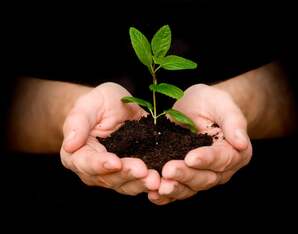
Take for instance, the birds and the bees and the flowers and the trees. For millions of years, there’s been a special relationship between the flowers, shrubs, trees, and the creatures who share their ecosystem. The flora feeds and shelters the inhabitants while the birds, insects, and wildlife pollinate and spread seeds to ensure the continuation of their home sweet home.
Of course, the balance can be thrown into a tizzy by drought, fires, floods, disease, and such, but eventually, the balance is restored. Our mother is patient and can wait decades or even centuries for the terrain to heal. Things may not be exactly as they once were. It may have necessitated some plants or critters adapting to new circumstances. Yet, they seem to have no problem getting used to the new normal.
It’s when the habitat suffers irreparable harm that the situation becomes critical. Meadows and woodlands have been lost to urban growth as well as farmland pushing farther out into the countryside destroying all the native habitat. That’s difficult or near impossible to overcome.
Then there’s the overuse of insecticides, herbicides, fungicides, and fertilizers on our yards and farm fields. Pesticides not only kill pests and weeds but also wipe out pollinators and upset the balance between predator and prey insects. In other words, in less than 100 years, humanity has disrupted a system that took millennia to perfect.
All is not lost, though; there’s a lot we can do to help Mother Nature regain some of her lost ground.
We’ve all read or heard about how our pollinator populations have taken a drastic nosedive. More than forty percent of the world’s pollinating insects live under the threat of extinction. It’s pretty scary knowing that certain foods may become scarce without bees, butterflies, birds, bats, beetles, and other pollinators. But that doesn’t have to happen. There’s something all of us can do to prevent the worst-case scenario from coming true.
Create a place for the pollinators to thrive. It doesn’t matter if it’s a window box in an apartment complex, a roof garden in a bustling metropolis, a few potted plants in a patio, or acres of wildflowers on a farm. Pollinators are not picky about where they live. If you plant it, they will come.
Go ahead. Add some pollinator-friendly plants to your yard. By mixing native flora with the existing landscape, the butterflies, moths, birds, bees, and beetles quickly find their favorite spot and make themselves at home.
How do you find native plants?
- Check for any environmental restoration or conservation organizations in your area.
- Call your state’s colleges or universities to inquire about any environmental or horticultural programs they may have.
- Contact a master gardener.
- Look on your state or county’s website for environmental programs they sponsor.
- Go by a city, county, state, or national park and ask.
- Check with your local Native Plant Society for the best plants for your area. http://www.ecosystemgardening.com/native-plant-societies-in-north-america.html
Every little plant provides food, shelter, or a resting place for native bees, beetles, butterflies, and migrating birds.
Louise Washer from Pollinator Pathways, Northeast recommends the three-three-three strategy for homeowners wanting to provide a waystation for pollinators. “Choose three spring, three summer, and three fall native plants so you have a succession of blooms throughout the whole growing season.” And don’t forget to include shrubs and trees. “Trees are meadows in the sky.”
Native plants aren’t fussy and are easy to grow. You don’t have to pamper them. Children can do it. Grownups can do it. All communities, whether lower-income or more affluent, can get involved. Pollinators don’t discriminate. They love everyone who cares enough to plant a flower.
How about you? Ready to get your hands dirty?
 RSS Feed
RSS Feed

